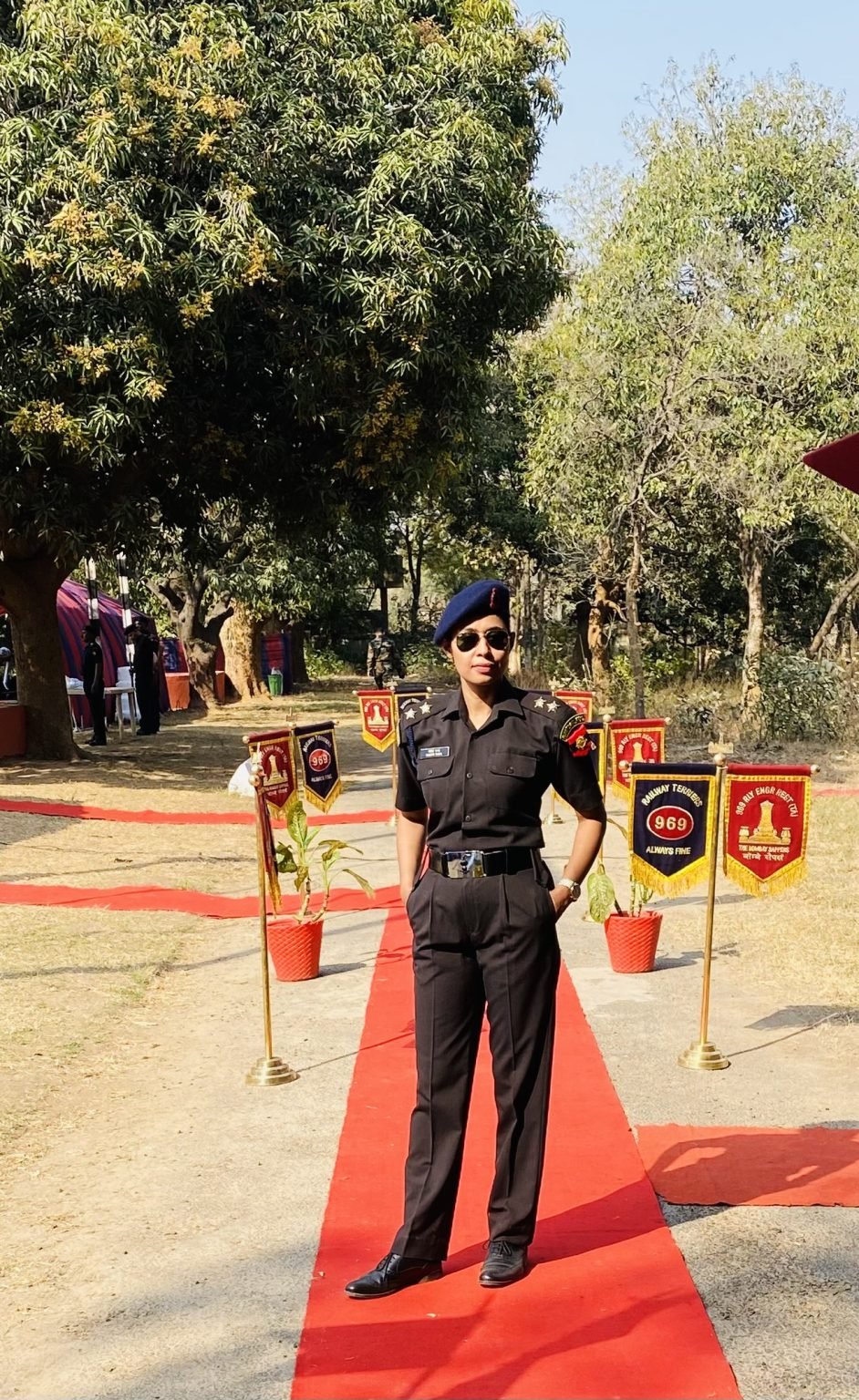In 2016, I happened to read an article on MP Shri Anurag Thakur donning an olive green uniform. So, I became interested in the Territorial Army, and my long-standing appreciation for the Indian Armed Forces took on a whole new meaning as I understood that the TA provided a novel opportunity for gainfully employed civilians to serve the nation both in civil and military capacities. Yet, excitement was dampened by the fact that then women were ineligible for applying for a TA.
But I refused to give up. Inspired by those very words from Paulo Coelho- “When you want something badly enough, all the universe conspires to help you achieve it,” I kept hope alive. And, with the PIL filed for women to be admitted to the TA, I could see my break finally on the horizon. After three long years, PIL was allowed entry, and I jumped at the opportunity without hesitation.
The selection process underwent three stages: Written exam, PIB interview, and SSB interview, which was rigorous in itself, but I stood among the 13 women recommended by SSB Bhopal. I was a Legislative Officer in the Parliament of India at that time, but on April 22, 2021, my life took a new turn when I received the call: “Jai Hind, Sahab.”. You have been selected in the merit list of the TA.” I still can remember the moment. It filled me with indescribable joy. I rushed to the Ministry of Defence and confirmed the news. To my surprise, I was the only woman selected. This made me the first and the only female officer in the Non-Departmental Territorial Army.

Five years of pursuing the goal I had set out to achieve- to join the Armed Forces- making me wear two stars proudly on my shoulders as an officer of the force. The real test, however, began at the Officers Training Academy (OTA) in Chennai. Life as a cadet was very different from my desk job earlier. Waking up at 4:00 a.m., facing the sweltering Chennai heat, and rigorous physical training at the Acharya Training Area tested my endurance. The PPT and BPET were especially gruelling—I could hardly run 500 meters, not to talk of the required 5 kilometres.
My transformation transcended the physical. I also had to cut my long hair, which took quite some time to get used to but subsequently felt free. From the inability to even fire a rifle to handling rocket launchers confidently, my journey was moving in a different direction. It was, however, at the Drill Square that my biggest test lay. Sleepless nights were spent dreading drills, and an inability to differentiate between left and right frustrated my Drill Instructor (DI). However, hardships taught me to appreciate the brotherhood and discipline that OTA imparted to me much more.
This training taught me that life’s greatest lessons often come through adversity. It shaped me, pushed me beyond my limits, and told me that even if I am not the best in my batch, I have the resilience and passion to strive for improvement continually. OTA was not just training soldiers; it was growing leaders. When on November 13, 2021, I completed my training, and it was not just a personal victory but rather a step forward for the Indian Army toward gender equity and inclusivity.
As T.S. Eliot once said, “Only those who will risk going too far can possibly find out how far one can go.” Jai Hind.
